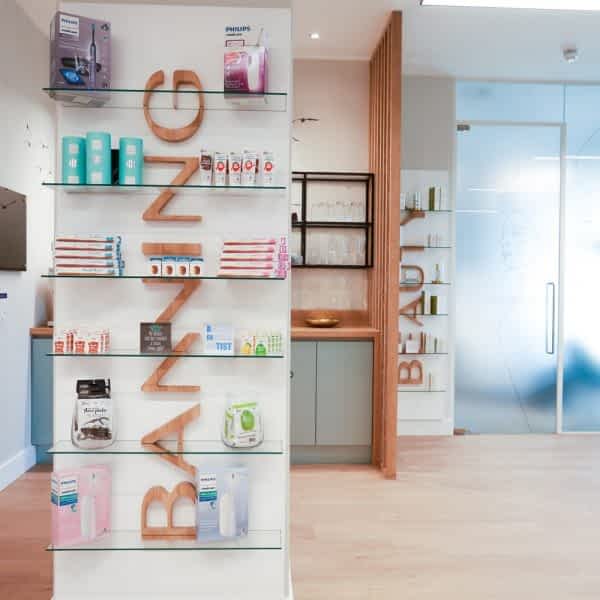
Gaps in teeth. Why do I have them and how to fix them?!
Gaps in teeth. For some it’s a cute, endearing feature that gives character to our face. For others a complete annoyance in everyday life.
With the likes of Madonna, Vanessa Paradis, Seal and Elijah wood rocking their gapped teeth with confidence in the celebrity world, you may be inclined to think that if it’s good enough for them, it’s good enough for me. However, we don’t all have it so easy.
Whilst gaps in teeth may give off an adorable, almost innocent appearance, the reality can be frustrating for those living with Diastema (as it’s known in the medical world.) Any space between the teeth is the perfect trap for food debris. It can become quite embarrassing having to pick tiny morsels of food from out of your teeth after a meal and even worse discovering that something has become wedged for all to see hours after eating.
Meanwhile, the food that lodges into these nooks becomes a breeding ground for bacteria, and we all know what that leads to. Plaque, tartar, and decay. Before you know it, that gap can become even larger as the tooth is eroded from the outside in.
Drinking can also be a problem, as the liquid can easily escape the mouth through the spaces in teeth, resulting in a fountain effect if the lips are not securely sealed.
Aside from the problems with food and drink, a gappy grin can play havoc with your speech. With air escaping between the teeth when speaking, the result can be a lisp or even unintentional whistling. This can really affect self-confidence in both school and the workplace.
If you are finding that the gaps between your teeth are proving to be a nuisance, you may like to know what can be done to solve the problem.
What causes gaps in teeth?
Diastema can occur at any time in life, affecting both children and adults. Gaps can form between any of our teeth, but they are usually most notable in the upper two incisors. These are the most visibly prominent of our teeth and provide the structure for our tongue and lips to form sounds and words correctly.
There are multiple causes for gaps in teeth. In some cases it is hereditary and a defining feature that’s passed from generation to generation. Gaps can form when the teeth are too small for the jaw and therefore do not fill the complete jawline. This can result in spaces between the teeth or maybe just some excess space towards the back of the jaw.
Certain behaviours during the developmental stages of teeth formation can also cause diastema. Thumb sucking, dummy use and tongue thrusting are common habits amongst children but can result in unnecessary pressure being applied to the front teeth which disturb them from their normal positioning.
Our teeth do tend to shift throughout our lifetimes, but age can be a contributing factor in the emergence of gaps in teeth. Gum disease is more common as we get older. The loss of gum tissue or even bone loss in extreme cases can cause the teeth to drift, if not fall out completely.
Since there are so many possible causes for tooth gaps, what can be done to fix the problem?
Can gaps in teeth be closed?
The good news is that for as many causes of tooth gaps there are, there are just as many potential solutions. There are a number of techniques that your dentist can draw on, depending on the general health of your teeth, your age and the size and position of the gaps in question.
Here are the most common strategies for closing those gaps once and for all:
Composite Bonding
Composite Bonding is a great solution for filling minor gaps between teeth. Using a tooth-coloured resin, the existing teeth can be built up in shape and size, while maintaining the correct aesthetic proportions to close the gaps and give the impression of perfectly formed gapless teeth.
In many cases, bonding is an ideal option as it is a quick, painless treatment that requires little to no prep and can usually be completed in a single sitting. However, there are some limitations and for very large gaps between the teeth, an alternative will probably be suggested by your dentist.
You can read all about the benefits of Composite Bonding here
Invisalign
The dental topic that is hot on everyone’s lips these days: Invisalign. Invisalign treatment is modern-day orthodontics at its finest. A comfortable, effective alignment procedure that you barely notice is there.
Using advanced iTero scanning technology, digital images are captured of every single tooth and put together to create an exact 3D replica of your mouth. This will clearly demonstrate where there are gaps in your teeth, even ones you might not be aware of. Using the Invisalign outcome simulator, your dentist can show you a visualisation of what your teeth could look like without gaps after Invisalign treatment. Once you agree with the final look, your bespoke aligners can be produced to fit your teeth like a glove at every stage in your treatment.
Using these clear plastic aligners, the teeth are gently encouraged to shift into a more orderly position. This new even distribution is ideal for straightening, closing gaps and releasing overlaps. Gaps can be a thing of the past with Invisalign treatment.
Find out more about Invisalign today
Braces
Braces are the more conventional orthodontic solution to close gaps between teeth. Much like Invisalign, a calculated force will be applied to the teeth, to slowly move them into a position that fills the vacant spaces.
There are many styles of braces to choose from these days, all of which have their own advantages and disadvantages. You can select from the traditional metal brace to self-ligating or the more discreet options of ceramic or lingual braces.
You can read more about our brace options right here
Porcelain Veneers
In the case where your teeth may just be too small for your jaw, porcelain veneers could help to give you a filling, flawless finish and eliminate any visible gaps. Instead of building up the existing tooth structure, as in Composite Bonding, with veneers your teeth are covered by custom-made porcelain shells. These shells will be made to the exact shape and size that is needed to reduce the empty spaces between the teeth.
Since your veneers are made to suit your mouth perfectly, you can choose the exact colour you would like your new set of teeth to be. Thanks to the high-quality porcelain ceramic, they are long-lasting and stain-resistant.
Dental Implants
Dental Implants would only be considered as a solution for gaps in teeth if an entire tooth or several teeth were missing. This would not be a treatment to resolve spacing issues, as the implant would need to embed comfortably between the natural teeth and their root structures.
However, when it comes to filling a gap caused by an absent tooth, you won’t find a better solution than implants. They look, feel and function just like your normal teeth and can help restore normality to eating and speaking when compromised by an annoying gap.
To find out all about Dental Implants here.









